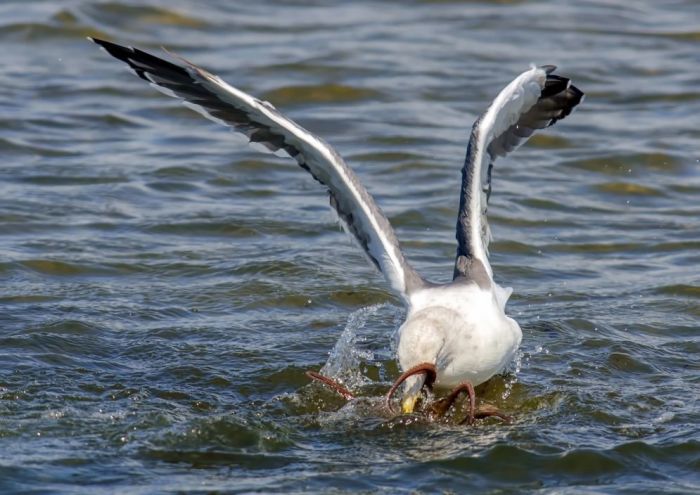|
|
Seagull Hunting An Octopus
|
Octopuses have a relatively short life expectancy, and some species live for as little as six months. Larger species, such as the North Pacific Giant Octopus, may live for up to five years under suitable circumstances. However, reproduction is a cause of death: males can only live for a few months after mating, and females die shortly after their eggs hatch. They neglect to eat during the (roughly) one month period spent taking care of their unhatched eggs, but they do not die of starvation. Endocrine secretions from the two optic glands are the cause of genetically programmed death (and if these glands are surgically removed, the octopus may live many months beyond reproduction, until she finally starves).
Octopuses have three hearts. Two pump blood through each of the two gills, while the third pumps blood through the body. Octopus blood contains the copper-rich protein hemocyanin for transporting oxygen. Although less efficient under normal conditions than the iron-rich hemoglobin of vertebrates, in cold conditions with low oxygen pressure, hemocyanin oxygen transportation is more efficient than hemoglobin oxygen transportation. The hemocyanin is dissolved in the plasma instead of being carried within red blood cells and gives the blood a blue color. Octopuses draw water into their mantle cavity where it passes through its gills. As mollusks, octopuses have gills that are finely divided and vascularized outgrowths of either the outer or the inner body surface.
|
|









